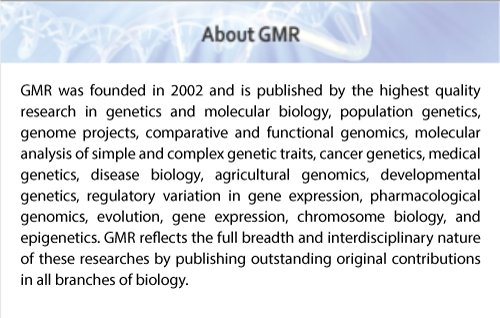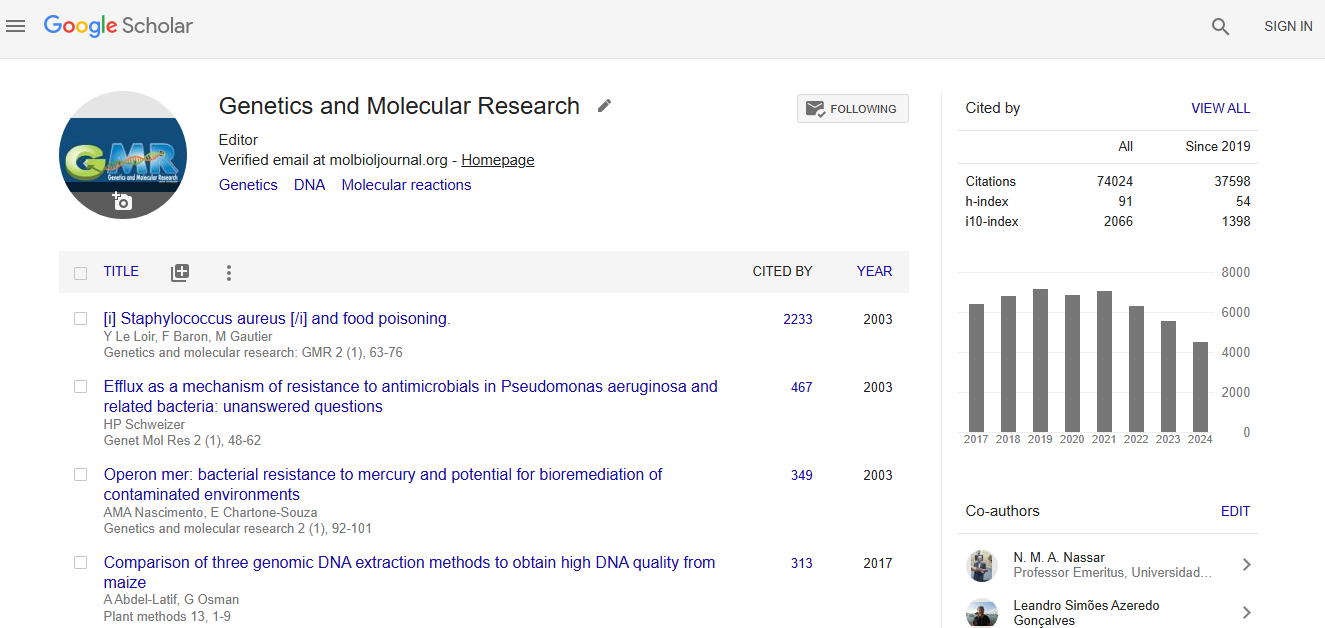Abstract
Study of the genetic diversity and structure of a natural population of Nectandra megapotamica (Spreng.) Mez. using RAPD markers
Author(s): L.S. Costa, L.R.S. Reiniger, B.M. Heinzmann, L.P. Amaral and C.M.L. SerroteNectandra megapotamica (Spreng.) Mez. is a tree species that naturally occurs in the Atlantic Forest, Brazil. The aim of this study was to evaluate the genetic diversity and structure of a natural population of 12 N. megapotamica individuals using random amplified polymorphic DNA markers. Eleven primers were used in this study, producing 81 bands, of which 98.99% were polymorphic. Analysis using STRUCTURE defined three different clusters (K = 3), results that were consistent with those of principal coordinates analysis. Both Nei’s genetic diversity (h = 0.33) and Shannon’s diversity index (I = 0.49) were relatively high. Analysis of molecular variance indicated that 24.89% of the genetic variability was among clusters, while the remaining 75.11% was within clusters. The Mantel test showed a weak correlation between genetic and geographic distances (r = 0.25, P = 0.105). Overall, the results revealed high levels of genetic diversity within clusters and high genetic differentiation among clusters without any spatial pattern of genetic variability. In addition, gene flow was independent of the geographical distribution and was compatible with the hierarchical island model.
Impact Factor an Index

Google scholar citation report
Citations : 74024
Genetics and Molecular Research received 74024 citations as per google scholar report
